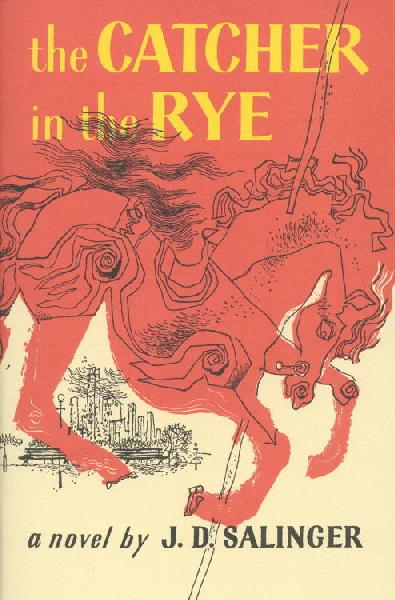 A bildungsroman is a novel of intellectual, spiritual or moral evolution.
A bildungsroman is a novel of intellectual, spiritual or moral evolution.+ Gone With the Wind, Margaret Mitchell
Bonnie dies while horseback riding, breaking the tie that binds the two main characters.
+ The Awakening, Kate Chopin
Once Edna embarks upon her quest for independence and self-fulfillment, she finds herself at odds with the expectations and conventions of society, which requires a married woman to subvert her own needs to those of her husband and children.
+ Bless Me, Ultima, Rudolfo Anaya
As Antonio moves from childhood to adolescence, he tries to reconcile his parents’ and his community’s conflicting cultural traditions; Antonio’s goal is independent thought and action; he strives to make his own moral decisions and to accept responsibility for their consequences.
+ The Catcher in the Rye, J.D. Salinger
The major conflict is within Holden’s psyche. Part of him wants to connect with other people on an adult level (and, more specifically, to have a sexual encounter), while part of him wants to reject the adult world as “phony,” and to retreat into his own memories of childhood.
+ Invisible Man, Ralph Ellison
The narrator seeks to act according to the values and expectations of his immediate social group, but he finds himself continuously unable to reconcile his socially imposed role as a black man with his inner concept of identity, or even to understand his inner identity.
+ Tom Jones, Henry Fielding
Tom Jones and Sophia Western cannot marry, since Tom is believed to be a foundling bastard and Sophia's father wishes her to marry someone of her own gentile class.
+ Narrative of the Life of Frederick Douglass, Frederick Douglass
A narrative insight of the trials and accoplishments of Fredrick Douglass.
+ Jane Eyre, Charlotte Brontë
Jane meets with a series of forces that threaten her liberty, integrity, and happiness. Characters embodying these forces are: Aunt Reed, Mr. Brocklehurst, Bertha Mason, Mr. Rochester (in that he urges Jane to ignore her conscience and surrender to passion), and St. John Rivers (in his urging of the opposite extreme). The three men also represent the notion of an oppressive patriarchy. Blanche Ingram, who initially stands in the way of Jane’s relations with Rochester, also embodies the notion of a rigid class system—another force keeping Jane from fulfilling her hopes.
+ My Name is Asher Lev, Chaim Potok
Asher Lev has an intense desire to paint. This often comes into conflict with the Ladover Hasidic community in which he has been raised.
+ The Chosen, Chaim Potok
Danny’s struggle between his family and religious obligations, and his desire to become a psychologist is the novel’s central conflict. Reuven experiences this conflict indirectly—as he helps Danny struggle through it, he struggles to understand it himself.
+ The Adventures of Huckleberry Finn, by Mark Twain
At the beginning of the novel, Huck struggles against society and its attempts to civilize him, represented by the Widow Douglas, Miss Watson, and other adults. Later, this conflict gains greater focus in Huck’s dealings with Jim, as Huck must decide whether to turn Jim in, as society demands, or to protect and help his friend instead.
+ A Portrait of the Artist as a Young Man, by James Joyce
Stephen struggles to decide whether he should be loyal to his family, his church, his nation, or his vocation as an artist.
+ Their Eyes Were Watching God, by Zora Neale Hurston
During her quest for spiritual fulfillment, Janie clashes with the values that others impose upon her.
+ Black Boy, by Richard Wright
Richard demonstrates inborn individualism and intelligence, traits that can only cause problems for a black man in the Jim Crow South; he struggles with blacks and whites alike for acceptance and humane treatment; he struggles with his own stubborn nature.
+ David Copperfield, Charles Dickens
David struggles to become a man in a cruel world, with little money and few people to guide him.

No comments:
Post a Comment